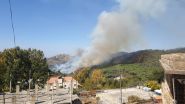
Three... two... one... Touchdown!
Each week, the Rafic Hariri International Airport runway hums with the arrival of diplomatic missions. On Monday, France’s special envoy to Lebanon Jean-Yves Le Drian touched down. American envoys Tom Barrack and Massaad Boulos are expected soon.
But so far, each mission has taken off again before Lebanon’s control tower could even grasp the basic procedures—starting with what should be its first step: electing a president who embodies real hope.
It’s an orbital rotation in every sense—except the destination isn’t Saturn or Mars, but the depths of a country suspended in zero gravity.
Each diplomatic mission follows the same worn-out script: meetings with the three presidents (of the Republic, the government and Parliament), with the occasional detour to visit the army commander. For months now, this sequence has played out identically.
It always opens with the inevitable first act, “Lay down your arms,” addressed to Hezbollah. And the response from the militia’s Secretary-General Naim Qassem never varies, “We will not allow anyone to disarm us.”
For those newly landed on this planet: Lebanon faces a stark choice—either it remains a state within a state, operating above the law, or it slides into civil war.
Western powers are ramping up pressure for a clear timeline to disarm militias and return weapons to legitimate security forces. Yet, the men in black from Tehran remain unfazed.
Phase Two: The Camps
Following the highly publicized visit of Palestinian Authority President Mahmoud Abbas, an agreement was struck: the disarmament of the camps would begin in Beirut on Sunday, June 15. Camps across the country were to follow “according to a strict timeline.”
But since then, the radar has gone dark. No white smoke. Not even a tweet from the “control mission.” The countdown has frozen somewhere between T-minus 10 days and eternity.
Phase Three: UNIFIL in the Crosshairs
Americans and Israelis are now openly questioning the purpose of UNIFIL. It's costly, and it has failed to stop Hezbollah from transforming South Lebanon into a battlefield riddled with tunnels. To make matters worse, “sympathizers” of the pro-Iranian militia now harass peacekeepers daily, making their already difficult mission nearly impossible.
With August fast approaching, renewing UNIFIL’s mandate without significant pushback looks increasingly unlikely.
Phase Four: The Reform Mirage
Reforms? They’re stuck in elliptical orbit—always visible through the telescope, never within reach. Aside from some dubious IMF proposals that risk worsening the economic crisis, there's nothing new on the horizon.
Oh, wait...the government just imposed new fuel taxes. A brilliant move guaranteed to deepen public frustration. Because, in the end, no country or credible institution is willing to invest a single cent in Lebanon’s recovery until the first phase is resolved. That is, as long as Hezbollah holds the country hostage.
In essence, Lebanon resembles a drifting space station, where political physics are inverted: the more pressure there is to disarm, the more entrenched the weapons become—sucked into a black hole of cynicism and selfishness.
Still, someone must eventually take back control, switch off autopilot and hit the emergency stop button. Otherwise, someone else will.
Phase Five: Enter the Lunar Dimension—Syria
While Lebanon spins in a cycle of threats, stalling and fading credibility, Damascus is surging ahead:
$400 billion in investments in ports, power and infrastructure. Demand is overwhelming, and the doors are firmly closed.
At this pace, millions of Lebanese could soon become cheap labor in Syrian cities.
By then, the theory of parallel universes won’t be theory anymore. It will be reality.
Houston, we have a problem—and it’s entirely an earthly one.





Comments